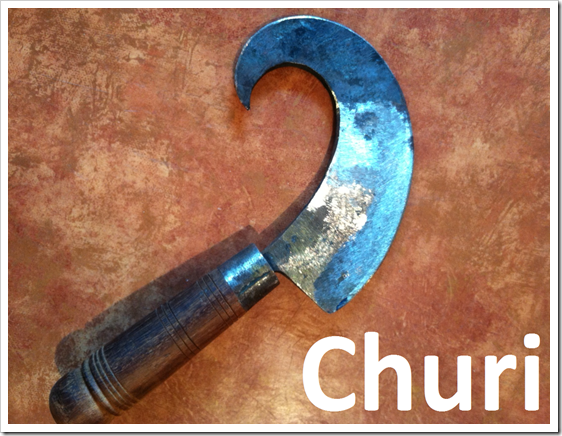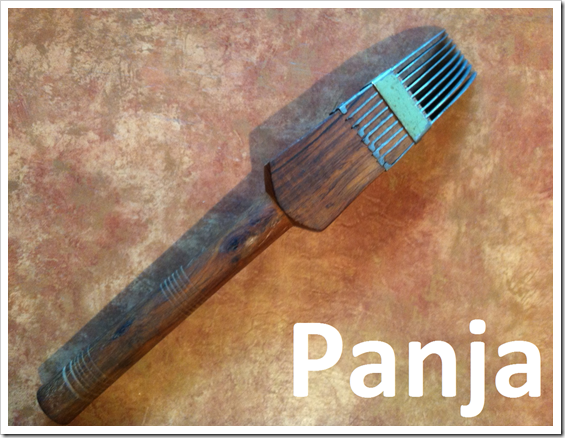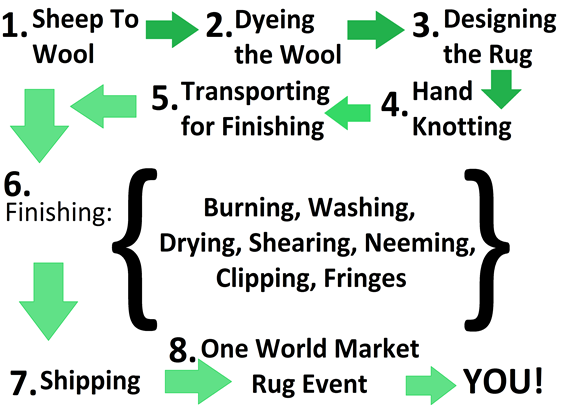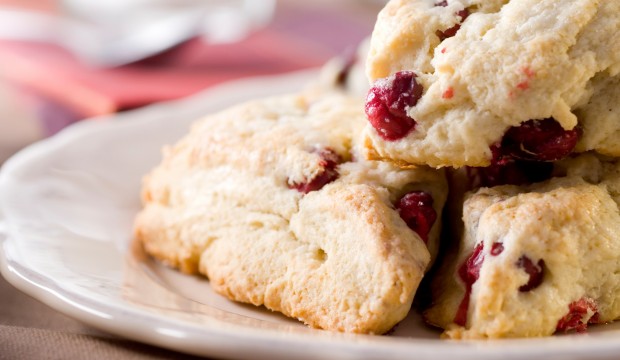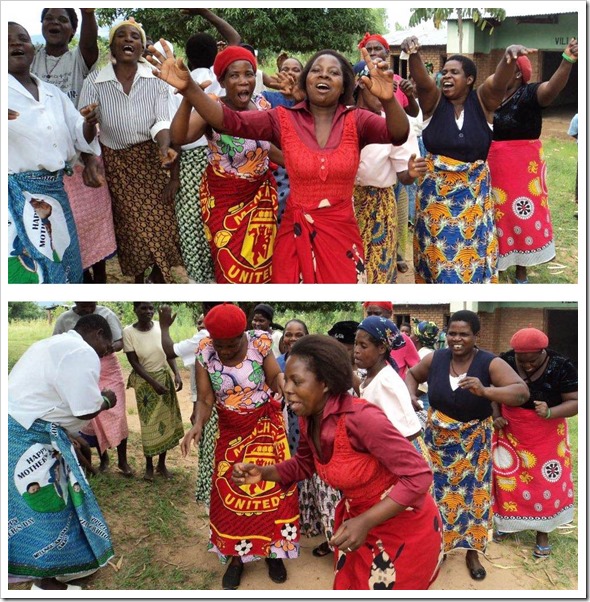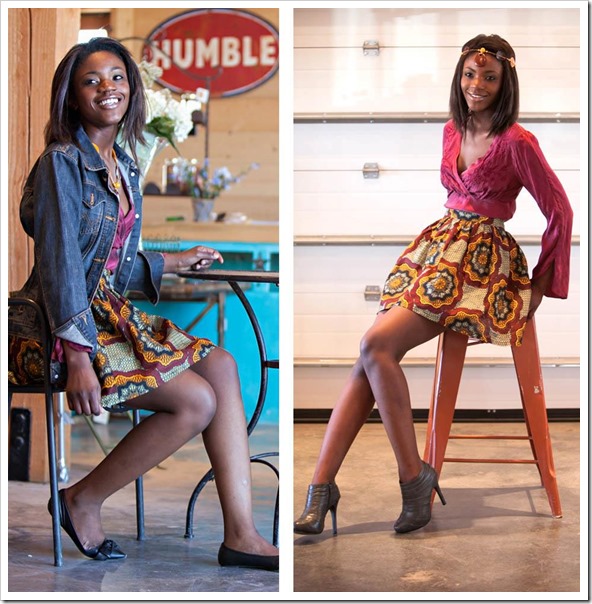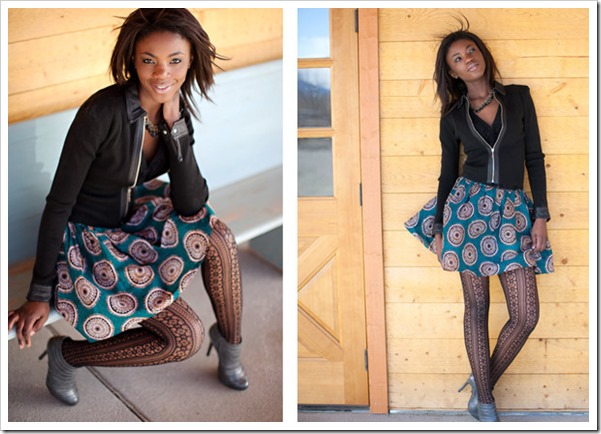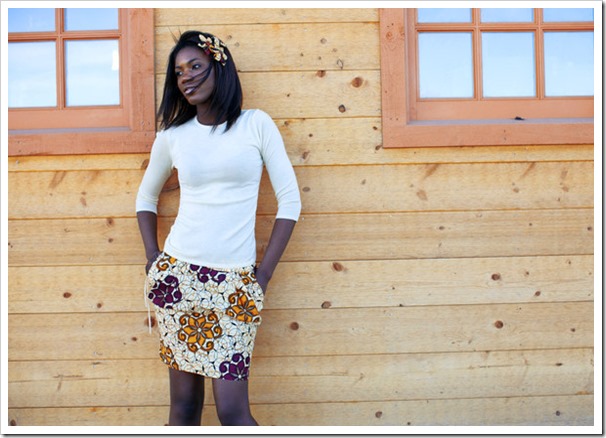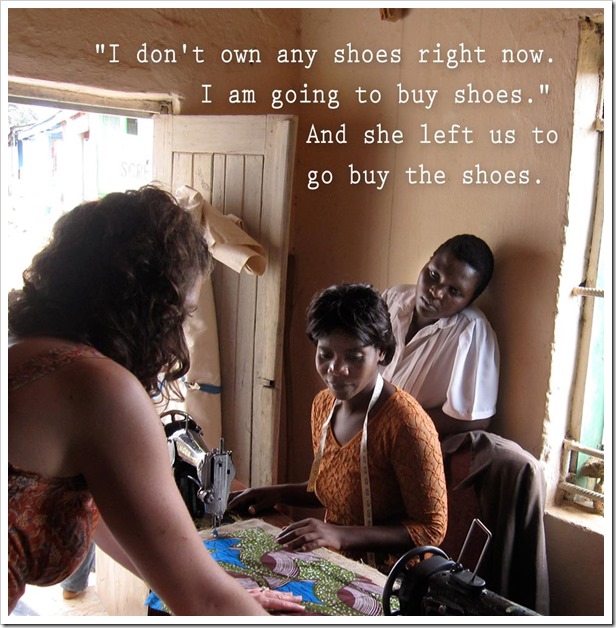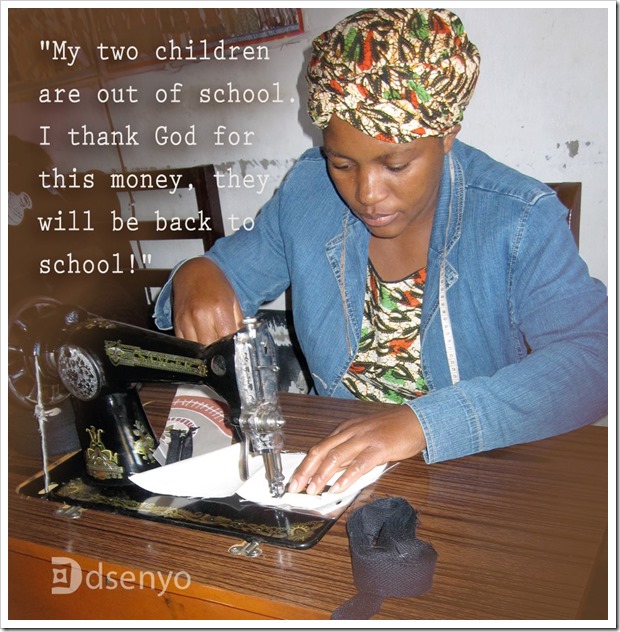This post is the fourth in our series Making a Real Difference. To catch up on what this series is about – check out the first post here: Upcoming Event to Support 850 Families, the second post: From Sheep to Wool., and the third post: From One Knot to an Entire Rug.
In our last post of this series, we left off with the rugs being hand knotted by our adult artisans living in rural Pakistan. Our rug has come a long way in it’s life cycle,
![[life-cycle-of-a-fair-trade-rug4.png]](http://lh3.ggpht.com/-EezIcJew6B4/UBrXRKyIHGI/AAAAAAAAAqQ/NoTbIt_42Lw/s1600/life-cycle-of-a-fair-trade-rug4.png)
and the next steps are all part of finishing the rug. It’s quite a process!
First, transporting the rugs from the knotter’s home to a warehouse facility in Lahore for finishing.

By way of car, ox cart, train, or even on the back of motorbike or bicycle, the newly knotted rugs are cut from the loom and taken to the warehouse in Lahore for finishing.
When the rug comes from the village, it is first numbered, measured and recorded in a daily logbook.

This allows the artisan group to note the design and size of the rug, the artisan who produced it, the village in which they live and the name of the village supervisor.
Burning

First the rug is burned on the back with a natural gas flame in order to effectively clean the back of wool fuzz.
Washing
The rug then goes for washing. The rug is drenched with water, washed with a bleach and water mixture, rinsed clean and then washed again. This time the rug is scrubbed by hand with regular bar soap until it is full of a thick lather of soap. Buckets of water are dumped on the rug as the rug is scrubbed with a very tough scrub brush.

The rug is rinsed clean and then with a squeegie-like tool called the poorah the water is shuffled from the rug. The artisan needs to be careful as the poorah is quite sharp and could easily cut the nearly completed rug. Such vigorous washing is necessary for the rug to achieve its final shine.
Drying

The rug is then hung from the side of a building and left to dry in the sunlight for up to a week. Sunlight helps the rug become more brilliant.
Shearing

Next, the rug is sheared by an artisan who drapes the rug over a steel pipe, its diameter determined by the desired height of the final pile. With a heavy shears (similar to shears once used to hand-trim the border of a lawn), the artisan trims the pile to the desired length. It takes three years of training to become a master trimmer.
Stretching
Next, the rug goes for stretching. Using wooden platforms to frame the rug, artisans nail each inch of the rug to the platforms and leave it in the sunlight all day. Usually done on rooftops, this process corrects the shape of the rug which may have been altered during knotting or washing.

Rugs made with a woolen warp are more difficult to stretch because a woolen warp is not as "pliable" as a cotton warp. A cotton warp allows the rug to stretch and maintain its correct form after stretching.
Neeming

While the rug is on the stretching frame, an artisan applies an organic mixture to the back of the rug that provides a lifetime mothproof protection for the rug. This organic mixture contains a substance found in neem trees, which acts as a natural moth repellent.
Clipping and Fringes
The rug is brought back to the warehouse for the final steps of the finishing process. The fringes are tied using the leftover warp threads. These knots can be tied in several ways, from simple knots to exquisite needlework. The fringe knots protect the rug from unraveling by securing the warp and weft threads. A rug can become threadbare over time, but if the warp and weft are held together, the rug remains strong.

Another finishing process includes clipping any unwanted warp knots and weft threads. During the knotting of the rug, a knotter ties over 40 knots per minute and it is inevitable that some warp threads are cut. At the time, these warp threads are tied and knotting continues. At finishing time, these knots are cut out, leaving the structure of the rug untouched. Also, the ends of the shuttled weft threads are trimmed during this period.


NEXT TIME…
In our next post we’ll learn about how rugs make their way from Pakistan to One World Market!
One World Market will be hosting a rug event this year from: Thursday, September 5th until Sunday, September 8th.
Please let us know if you have any questions!


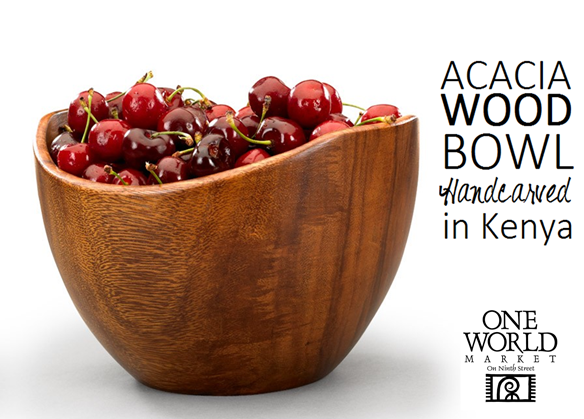



![[life-cycle-of-a-fair-trade-rug4.png]](http://lh3.ggpht.com/-EezIcJew6B4/UBrXRKyIHGI/AAAAAAAAAqQ/NoTbIt_42Lw/s1600/life-cycle-of-a-fair-trade-rug4.png)












